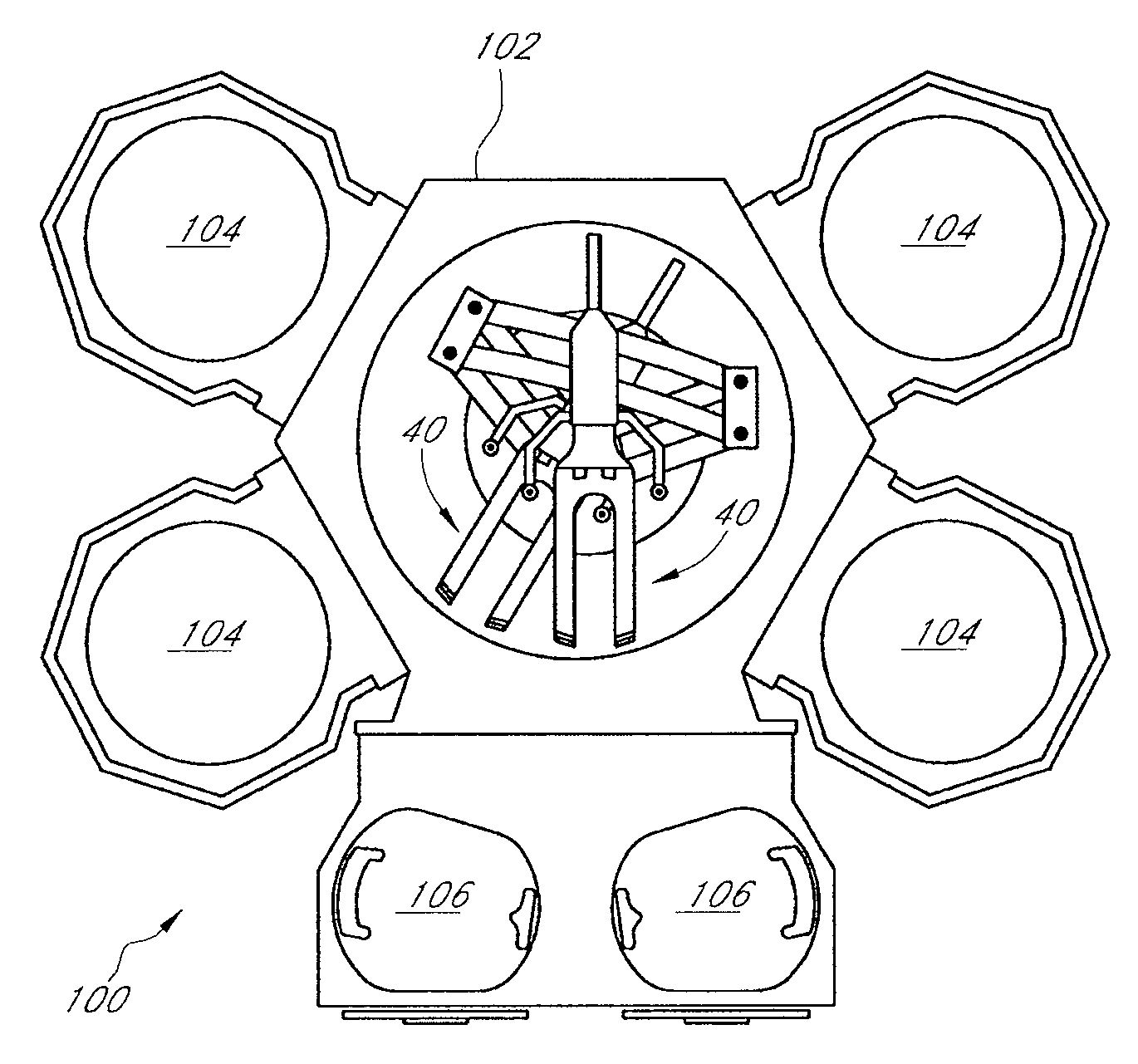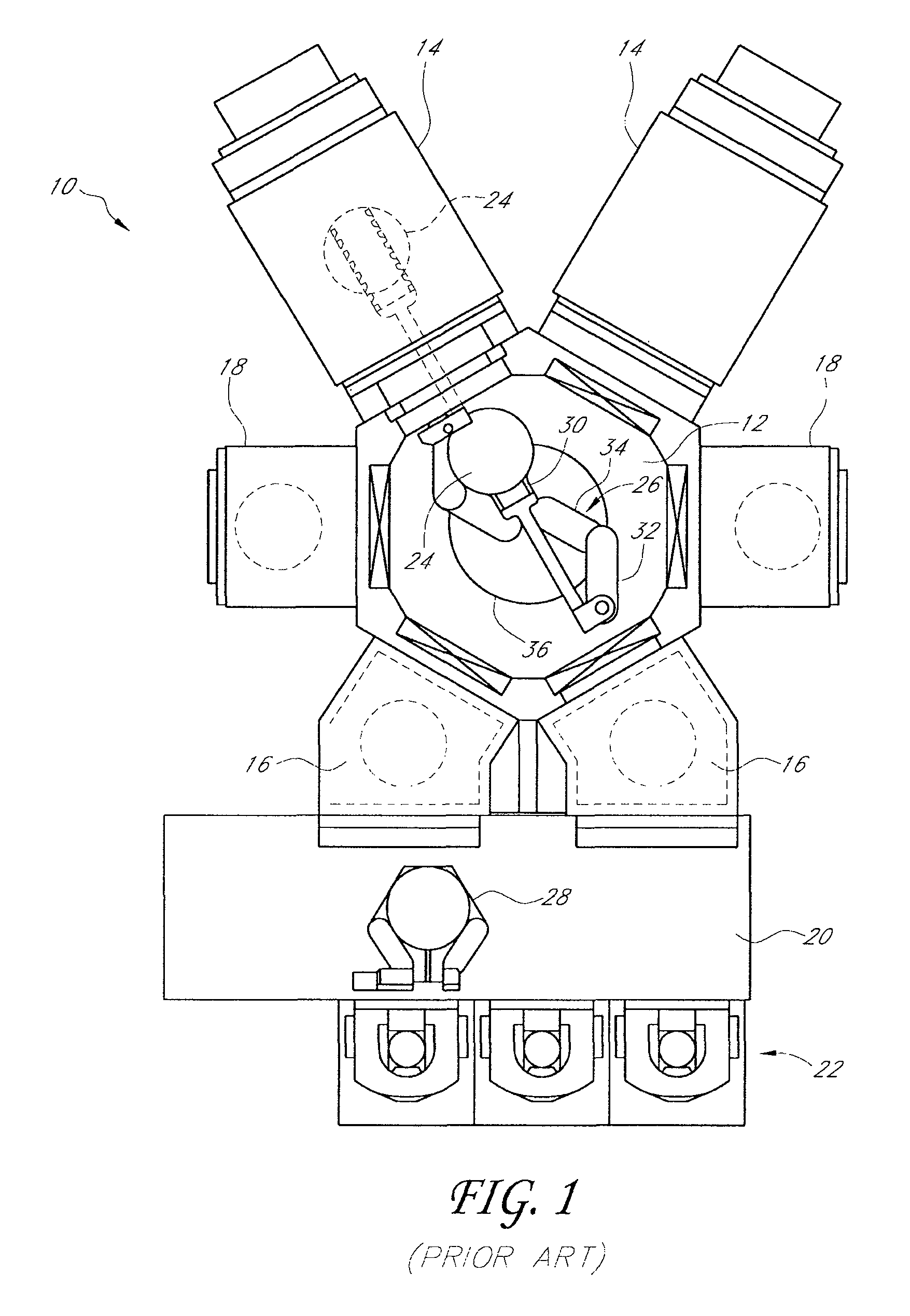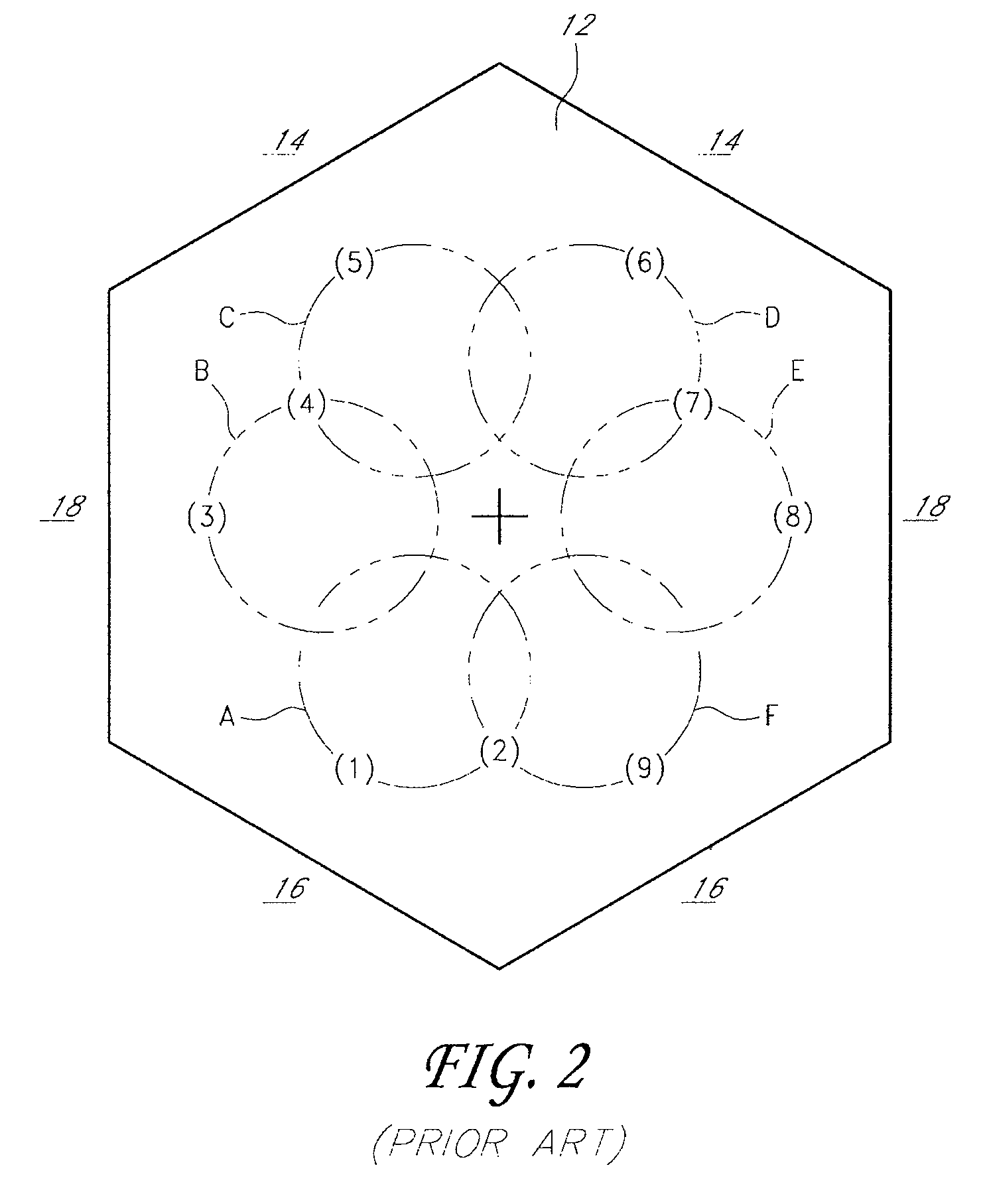Position sensor system for substrate transfer robot
a technology of substrate transfer robot and sensor system, which is applied in the field of substrate processing, can solve problems such as damage to the substrate, non-uniform process, and substrate dri
- Summary
- Abstract
- Description
- Claims
- Application Information
AI Technical Summary
Benefits of technology
Problems solved by technology
Method used
Image
Examples
Embodiment Construction
[0028]One problem with the above-described conventional methods of detecting substrate drift is that the robot arms sometimes interfere with the light beams emitted by the photosensors, which prevents detection of the substrate position. Each photosensor typically includes a light beam emitter above the end effector and oriented to emit a beam of light downwardly, and a light beam receiver below the end effector and configured to receive the beam of light from the emitter. The robot arms, in certain positions, can block the light beams and thereby interfere with the sensors' ability to sense the substrate position. Also, in apparatuses having multiple robots holding multiple substrates simultaneously, the substrates often overlap each other, and sometimes it is not possible to determine which substrate is being detected. Further, in some cases a photosensor's light beam is impeded by two different substrates, which results in a distorted calculation of the targeted substrate's posit...
PUM
 Login to View More
Login to View More Abstract
Description
Claims
Application Information
 Login to View More
Login to View More - R&D
- Intellectual Property
- Life Sciences
- Materials
- Tech Scout
- Unparalleled Data Quality
- Higher Quality Content
- 60% Fewer Hallucinations
Browse by: Latest US Patents, China's latest patents, Technical Efficacy Thesaurus, Application Domain, Technology Topic, Popular Technical Reports.
© 2025 PatSnap. All rights reserved.Legal|Privacy policy|Modern Slavery Act Transparency Statement|Sitemap|About US| Contact US: help@patsnap.com



